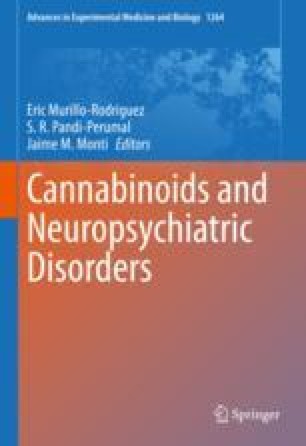 “Obesity-related insulin resistance (IR) and attenuated brain insulin signaling are significant risk factors for neurodegenerative disorders, e.g., Alzheimer’s disease. IR and type 2 diabetes correlate with an increased concentration of sphingolipids, a class of lipids that play an essential structural role in cellular membranes and cell signaling pathways.
“Obesity-related insulin resistance (IR) and attenuated brain insulin signaling are significant risk factors for neurodegenerative disorders, e.g., Alzheimer’s disease. IR and type 2 diabetes correlate with an increased concentration of sphingolipids, a class of lipids that play an essential structural role in cellular membranes and cell signaling pathways.
Cannabidiol (CBD) is a nonpsychoactive constituent of Cannabis sativa plant that interacts with the endocannabinoidome. Despite known positive effects of CBD on improvement in diabetes and its aftermath, e.g., anti-inflammatory and anti-oxidant effects, there are no studies evaluating the effect of phytocannabinoids on the brain insulin resistance and sphingolipid metabolism. Our experiment was carried out on Wistar rats that received a high-fat diet and/or intraperitoneal CBD injections.
In our study, we indicated inhibition of de novo synthesis and salvage pathways, which resulted in significant changes in the concentration of sphingolipids, e.g., ceramide and sphingomyelin. Furthermore, we observed reduced brain IR and decreased tau protein phosphorylation what might be protective against neuropathologies development.
We believe that our research will concern a new possible therapeutic approach with Cannabis -plant derived compounds and within a few years, cannabinoids would be considered as prominent substances for targeting both metabolic and neurodegenerative pathologies.”
https://pubmed.ncbi.nlm.nih.gov/34435590/
“CBD might be an essential factor that leads to the reduction of brain IR. Thus, we believe that our research will concern a new possible therapeutic approach with a Cannabis-plant derived compounds and within a few years, those substances would be considered as prominent compounds for targeting both metabolic and neurodegenerative pathologies.”
https://www.sciencedirect.com/science/article/pii/S0753332221008404?via%3Dihub

 “Background and purpose:
“Background and purpose: 
 “Despite the high incidence of traumatic brain injury (TBI), there is no universal treatment to safely treat patients. Blunt brain injuries destroy primary neural tissue that results in impaired perfusion, excessive release of glutamate, inflammation, excitotoxicity, and progressive secondary neuronal cell death.
“Despite the high incidence of traumatic brain injury (TBI), there is no universal treatment to safely treat patients. Blunt brain injuries destroy primary neural tissue that results in impaired perfusion, excessive release of glutamate, inflammation, excitotoxicity, and progressive secondary neuronal cell death.  “Cannabis sativa
“Cannabis sativa
 “The Cannabis sativa plant has been used medicinally and recreationally for thousands of years, but recently only relatively some of its constituents have been identified.
“The Cannabis sativa plant has been used medicinally and recreationally for thousands of years, but recently only relatively some of its constituents have been identified.  “Introduction:
“Introduction: “The use of cannabis for skin diseases and hair regrowth is at the preliminary stage.
“The use of cannabis for skin diseases and hair regrowth is at the preliminary stage.